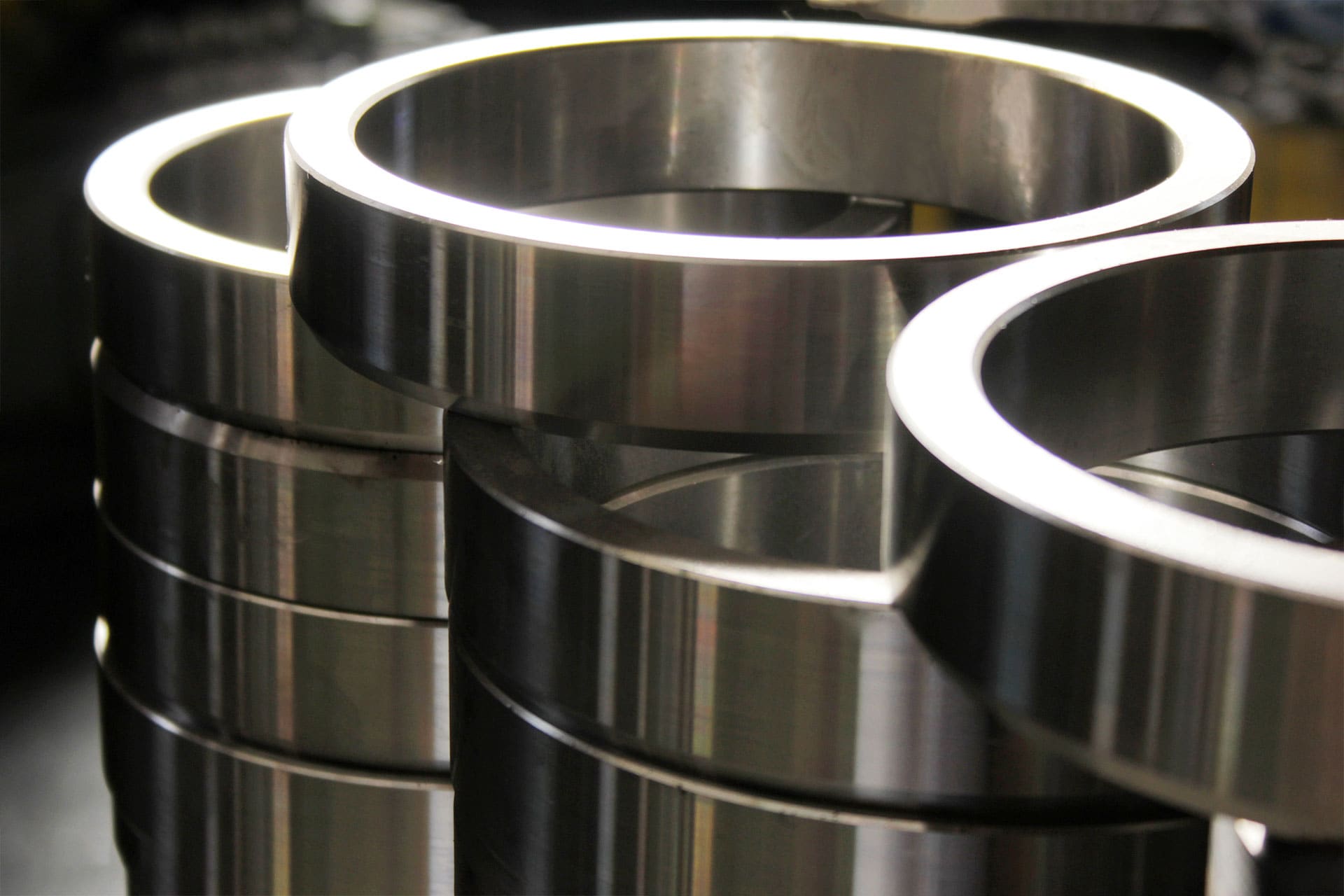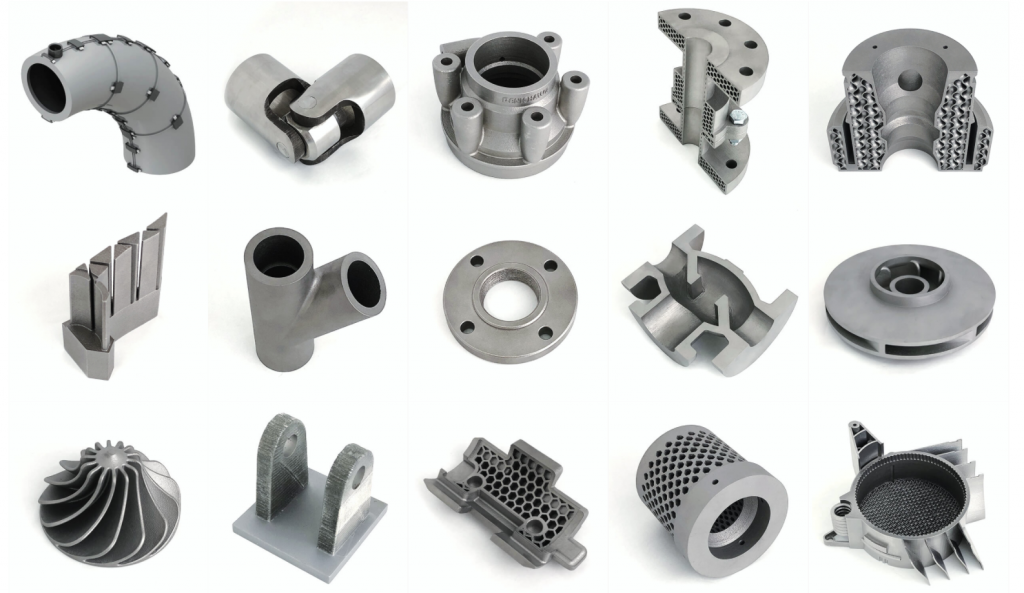Discovering the Versatile Uses and Applications of Aluminum Castings in Modern Industries
Aluminum castings have become integral to different modern industries due to their special homes. They provide substantial advantages in weight reduction, thermal conductivity, and corrosion resistance. From automobile technologies to applications in consumer items and construction, their adaptability is amazing. Yet, real level of their influence prolongs beyond instant advantages, meaning broader ramifications for sustainability and efficiency. What exists ahead for light weight aluminum castings in an ever-evolving commercial landscape?
Automotive Sector Innovations
The auto market has actually significantly embraced light weight aluminum castings to enhance lorry efficiency and effectiveness. By making use of light weight aluminum, producers can produce lighter elements, which add to boosted fuel economy and lowered discharges. Secret applications include engine blocks, transmission instances, and structural components, where the product's strength-to-weight proportion provides durability without including excess weight.
Aluminum castings also offer premium thermal conductivity, which assists in far better heat dissipation, consequently boosting engine efficiency. Additionally, innovations in casting technologies, such as die spreading and sand casting, enable the production of complicated geometries, enabling ingenious designs that optimize area and capability.
The recyclability of light weight aluminum straightens with sustainability objectives in the auto industry, advertising eco-friendly practices. As the industry continues to innovate, using aluminum spreadings is most likely to increase, driving additional advancements in vehicle layout and performance.
Aerospace Applications and Innovations
While the aerospace sector continues to prioritize weight reduction and fuel efficiency, aluminum spreadings have actually emerged as a vital material option for different applications. Their light-weight nature, paired with high strength-to-weight proportions, allows for considerable improvements in airplane efficiency and effectiveness. Light weight aluminum castings are generally used in structural parts, such as body structures and wing components, where decreasing weight is vital.
Current developments in aluminum casting innovations, including enhanced alloy solutions and accuracy casting techniques, have actually better improved the material's performance capacities. These advancements enable the manufacturing of intricate geometries and elaborate designs while keeping architectural stability. Furthermore, light weight aluminum's outstanding rust resistance warranties longevity and reliability in harsh aerospace environments.
As the aerospace industry significantly welcomes sustainability, aluminum spreadings provide a recyclable service that aligns with green methods, making them a pivotal aspect in the development of next-generation aircraft.
Consumer Goods and Everyday Products
As consumers progressively look for light-weight yet durable materials for daily products, aluminum spreadings have acquired popularity in various durable goods. The unique buildings of light weight aluminum, including its resistance to deterioration and exceptional thermal conductivity, make it an excellent option for products like cookware, house home appliances, and outdoor gear. Light weight aluminum cast pans and pots supply even warm circulation, boosting cooking effectiveness. Furthermore, using light weight aluminum in things such as bike structures and baggage assures a balance between toughness and portability. Makers value light weight aluminum spreadings for their flexibility, as they can be conveniently built right into complicated forms while keeping architectural stability. In addition, the capacity to reuse aluminum without deteriorating its properties aligns with growing customer preferences for sustainable items. Generally, aluminum spreadings are integral to the production of durable, practical, and visually pleasing durable goods, satisfying the needs of contemporary lifestyles.
Construction and Architectural Utilizes
Aluminum spreadings have become a crucial element in construction and building design, especially as a result of their toughness and lightweight nature. These residential properties make light weight aluminum an ideal option for different applications, consisting of architectural components, exteriors, and decorative features - Aluminum Castings. Builders and designers significantly use light weight aluminum spreadings for window structures, doors, and roofing systems, improving both capability and aesthetic appeals. The material's resistance to deterioration further prolongs its lifespan, decreasing maintenance costs and ensuring toughness in varied ecological problems
Additionally, light weight aluminum can be conveniently built right into detailed styles, enabling cutting-edge architectural expressions. Its flexibility assists in the production of personalized items that fulfill details style demands, from elaborate railings to complicated supports. As sustainability comes to be a top priority, light weight aluminum's recyclability includes to its allure in green construction techniques. On the whole, aluminum spreadings are reinventing the construction industry by giving lightweight, durable, and visually attractive options.
Electronic and electrical Elements
Aluminum spreadings play an important role in the manufacturing of lightweight electric rooms, which enhance transportability and effectiveness in numerous applications. Furthermore, their exceptional thermal conductivity makes them ideal for heat sinks, making certain peak performance and durability of electronic elements. In addition, light weight aluminum's conductive residential properties add to its usage in various electric conductors, stressing its relevance in contemporary technology.
Lightweight Electrical Rooms
Lightweight electrical rooms play a crucial function in shielding sensitive electronic elements from environmental elements and physical damage. Created from aluminum spreadings, these enclosures are valued for their strength-to-weight ratio, making them suitable for numerous applications throughout sectors. Their light-weight nature help in reducing overall system weight, which is important in mobile and portable electronics. Aluminum's deterioration resistance boosts sturdiness, prolonging the life expectancy of the enclosed parts. The ability to mold aluminum into complex forms permits for customized layouts, satisfying certain needs while making certain effective heat dissipation. Furthermore, these rooms can be conveniently integrated into existing systems, giving adaptability and flexibility in contemporary technological settings. On the whole, lightweight aluminum units substantially add to the efficiency of electronic gadgets.
Heat Sinks and Conductors
While lots of products are used in electronic elements, light weight aluminum castings stand apart for their effectiveness in warm monitoring as warm sinks and conductors. Their excellent thermal conductivity enables reliable warmth dissipation, which is crucial in protecting against the getting too hot of digital gadgets. Light weight aluminum's light-weight nature further improves its suitability for applications where weight is a significant aspect, such as in aerospace and automobile sectors. Furthermore, light weight aluminum castings can be conveniently molded right into complex shapes, offering layout adaptability for maximizing thermal efficiency. The rust resistance of light weight aluminum likewise adds to the longevity and integrity of these elements in different environments. As innovation advancements and tools become a lot more compact, the demand for efficient warm administration services, like light weight aluminum castings, proceeds to grow.
Marine Industry Utilization
The aquatic sector increasingly depends on aluminum castings for their exceptional toughness and corrosion resistance. These residential properties make light weight aluminum an optimal choice for numerous applications, including boat hulls, engine elements, and aquatic equipment. The light-weight nature of light weight aluminum spreadings makes it possible for enhanced gas efficiency and easier maneuverability in boat, which is important for both business and recreational vessels.

Aluminum spreadings additionally offer considerable price benefits due to their long lifespan and reduced maintenance needs, decreasing the general functional expenses for marine drivers. In addition, the adaptability of aluminum enables detailed designs that can meet specific efficiency needs.
Producers in the aquatic field utilize sophisticated spreading methods to produce complicated shapes, ensuring that parts satisfy extensive security and efficiency requirements. As the demand for high-performance marine vessels grows, light weight aluminum spreadings are positioned as a crucial product in boosting the functionality and longevity of marine devices.
Sustainability and Recycling in Light Weight Aluminum Spreading

Aluminum Recycling Process
Recycling light weight aluminum plays a vital duty in lessening ecological influence and saving resources within the spreading sector. The aluminum recycling process starts with the collection of scrap light weight aluminum, which can consist of old elements, making waste, and post-consumer products. This scrap is after that arranged, cleansed, and shredded right into tiny items to assist in melting.
As soon as prepared, the aluminum scrap is thawed in a heater at lower temperature levels than primary light weight aluminum manufacturing, considerably decreasing power usage. The liquified light weight aluminum is then cast into ingots or various other forms for reuse in numerous applications - Wisconsin Aluminum Foundry. This closed-loop system permits the reliable recovery of aluminum, protecting its homes while reducing the need for virgin products. As a result, the recycling procedure is a critical element of lasting methods in light weight aluminum casting
Environmental Advantages
While light weight aluminum spreading plays an essential function in various markets, its ecological advantages are especially exceptional pertaining to sustainability and resource conservation. The lightweight nature of light weight aluminum adds to power efficiency in transport, lowering fuel usage and exhausts. Additionally, aluminum spreading assists in making use of recycled products, substantially reducing the power needed for production contrasted to primary light weight aluminum. This recycling procedure decreases waste and decreases the ecological influence connected with mining and refining raw materials. Moreover, aluminum is 100% recyclable without degradation of its properties, advertising a lasting lifecycle. By selecting aluminum spreading, markets can significantly lower their carbon impact while promoting resource performance, making it an essential choice in the search of eco-friendly manufacturing practices.
Closed-Loop Equipments

Regularly Asked Questions
What Are the Trick Perks of Aluminum Castings Over Other Materials?
Light weight aluminum castings supply lightweight homes, exceptional rust resistance, and high strength-to-weight ratios. They can be conveniently formed right into complicated shapes, offer good thermal and electric conductivity, and are cost-effective, making them preferable over lots of different materials.
Exactly how Is the Aluminum Casting Process Eco-friendly?
The light weight aluminum spreading process is eco-friendly because of its recyclability, reduced power usage, and decreased waste manufacturing. Its ability to use recycled products reduces the carbon footprint, advertising sustainability within manufacturing methods.
What Are Typical Obstacles in Aluminum Casting Manufacturing?
Usual challenges in aluminum casting manufacturing consist of maintaining dimensional accuracy, managing thermal tightening, avoiding defects like porosity and inclusions, ensuring appropriate mold style, and maximizing manufacturing performance while lessening material waste and environmental impact.
How Do Light Weight Aluminum Castings Compare in Price With Other Manufacturing Methods?
Light weight aluminum spreadings normally provide competitive costs compared to other producing methods, particularly for medium to high-volume manufacturing. Their lower preliminary tooling costs and efficient material use can result in positive economics over time.
What Future Fads Are Anticipated in Aluminum Spreading Innovation?
Future trends in aluminum casting innovation are prepared for to include innovations in automation, improved alloy structures, enhanced reusing approaches, and the assimilation of 3D printing, all focused on increasing performance, reducing costs, and reducing ecological impact.
Recent improvements in light weight aluminum spreading innovations, consisting of boosted alloy formulations and precision casting methods, have better boosted the material's performance abilities. Aluminum castings have actually come to be a necessary component in construction and architectural layout, specifically due to their toughness and light-weight nature. The light weight aluminum recycling procedure starts with the collection of scrap aluminum, which can include old elements, producing waste, and post-consumer products. When prepared, the aluminum scrap is thawed in a heater at lower temperatures than key aluminum manufacturing, considerably reducing power consumption. Furthermore, aluminum spreading facilitates the use of recycled products, significantly reducing the power needed for manufacturing contrasted to primary aluminum.